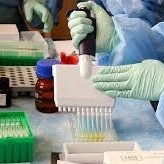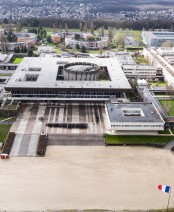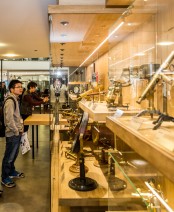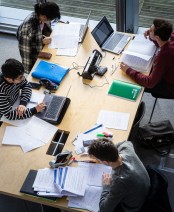Covid-19 : Group testing, key for a faster recovery


A major risk exists that, once the pandemic slows down or appears to be under control and lockdown measures are lifted, new waves of Covid-19 reappear. The 20th century has known three influenza pandemics: the 1918 “Spanish flu”, the 1957 “Asian flu”, and the 1968 H3N2 ”Hong Kong flu”, and the 21st century has already witnessed the 2009 “Swine Flu”. These four pandemics came in waves, with subsequent waves being more deadly than the first.
This raises the question of the length of the confinement which is obviously essential to spread the curve of the epidemic and reduce the burden on healthcare systems.
But the social, economic and financial cost of this strategy is extraordinarily high, warn the authors.
The French government recently estimated the economic slowdown due to lockdown measures to 33% of total production value. Based on this estimate, each month under lockdown amounts to an economic loss of about 2.5% of yearly GDP. This is not sustainable for long, and all governments will have to develop exit strategies very quickly.
A simple principle
Assuming that 2% of the population is infected, large scale testing of populations would put 98% of the population back to work, but at the same time, current test production levels are insufficient for mass testing in many countries. In France alone, it is estimated than 84.000 tests are produced on a weekly basis compared to a population of 65 millions inhabitants… Even if production can be scaled up, months or even years would be needed to reach a level in line with the challenge of the way out.
The authors are therefore pleading for a short term strategy to speed up the recovery. Biologists have been used for a long time to rely on group testing to manage mass screening challenges.
The principle is simple: it involves using each available test to detect the presence of the virus in a group of n individuals. If no individual is infected, the test will be negative and the n individuals can therefore be freed up to returned to work simultaneously, with just one test.
Each test allows to detect the virus in one sample. This sample can be coming from one individual (individual testing), or from a group of individuals (group testing). In this later case,
individual samples are combined to create a group sample, and the test will detect presence of the virus in the group sample. While individual testing allows to determine whether a given person is a virus carrier, group testing will determine whether the virus is present in the group sample or not. Therefore, group testing will be able to reach one of two conclusions: a negative outcome will indicate that none of the individuals of the group is a virus carrier ; a positive outcome will indicate that at least one individual in the group is a virus carrier, without any further information on the identity of this person.
The optimal size of the groups to be tested is the inverse
of the prevalence rate in the population. If 2% of the population is infected, it is optimal to test groups of 50 people, with a probability of releasing these 50 people equal to 36%. On average, each test therefore frees up 18 people!
Ethical considerations
This screening procedure could be implemented in groups with a high correlation of infection, for example within the same building or the same company, by setting up regular tests for each group.
The authors acknowledge that their proposal may raise ethical considerations. For example, it implies that some people tested, those belonging to the groups tested positive, will have to remain in confinement even if they are not infected themselves. This argument does not seem to them to be admissible. They do not believe that such a claim is relevant. They think that their proposal must be compared with alternative strategies, that of the status quo of mass confinement or that of slow deconfinement based on individual screening. In the latter option in particular, 18 times more citizens can be put back to work.
They also point out that it will be critical to quickly identify people who have developed the antibodies that make them immune to the coronavirus. Those people could play a crucial role in the activities most exposed to the infection, such as in the medical community or in the food retailing sector for example. Here again, serological tests exist, but in far too small volumes to meet the needs.
There is a strategy of grouping samples which allows to multiply the number of immune persons detected given our limited capacity for serological tests.
Testing for COVID-19 is a bottleneck that we face in front of the pandemic. Test production is currently much below what is necessary for mass testing strategies which are required in order to control the pandemic while letting people go back to work. Adequate use of group testing can save many tests.








